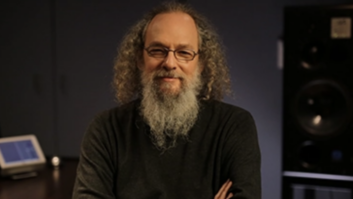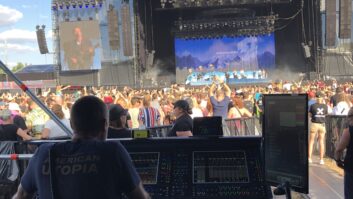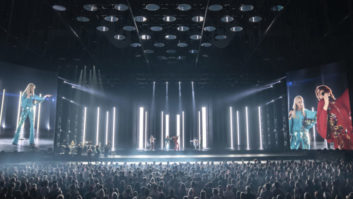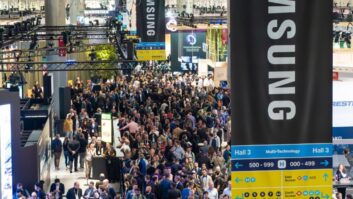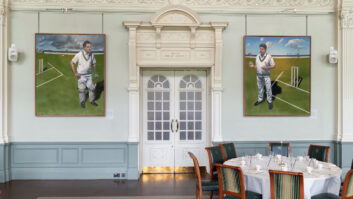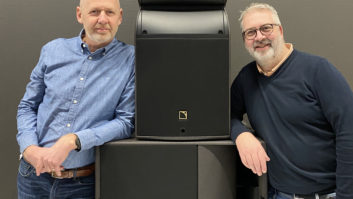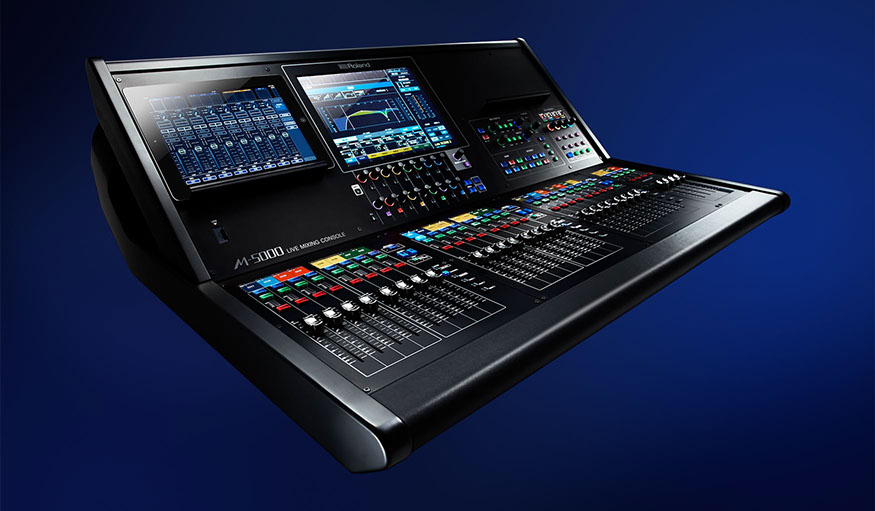
Our round-up of recently launched audio consoles shows they appeal to a broader range of users, with usability, input and output scalability and futureproofing the chief areas of focus.
Roland delivers adaptability with new operating platform
Roland’s M-5000 live digital mixing console is based on a new operating platform that provides more adaptability to individual workflow.
The name of the OHRCA platform stands for Open; High Resolution; and Configurable Architecture. These three concepts combine and adapt to meet the needs of the application and the operator by delivering 128 freely definable audio paths, an extremely flexible user interface, expandable protocols and multiple-format I/O choices.
A key component of the M-5000 is that its internal architecture is not fixed to any configuration, which allows it to be freely defined within a range of 128 input or output channels, so the operator can ‘build’ a console to suit the application.
The network options are equally versatile. In addition to two REAC (Roland Ethernet Audio Communication) ports, the M-5000 has two expansion card slots to support a range of system configurations and audio transport protocols such as Dante, MADI, Waves SoundGrid and other formats. The back panel includes 16 x 16 analogue I/Os; 4 x 4 AES/EBUs; a 16 x 16 USB audio interface; connection for control via an iPad, connected or wireless; and control ports including footswitches, GP I/O, RS-232C and MIDI. This enables the console to see up to 300 inputs and 296 outputs, all at 96kHz.
The control surface emphasises user assignability with the 12in colour touchscreen encompassing 28 channel faders in four groups, multifunctional knobs and buttons and an entire user-assignable section.
All-in-one desk Lawo
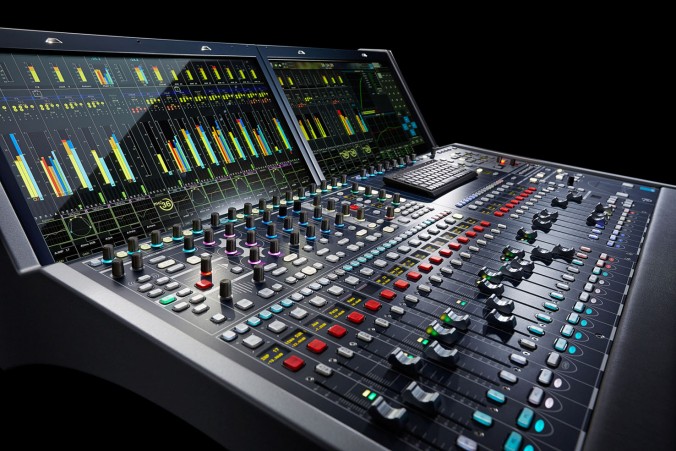
The Lawo mc²36 is an all-in-one mixing desk with a comprehensive feature set that covers broadcast, theatre, house of worship, live and install applications.
This flexibility is combined with impressive sound quality and Lawo-grade mic preamps. It is available with 16, 24 and 40 faders and integrated I/O and is suited to permanent installations with limited space.
The layer concept with its reveal feature allows users to handle large productions without the need for dozens of faders. The powerful DSP micro-core with internal 512 x 512 port audio matrix is natively equipped with Ravenna/AES67 technology, allowing the mc²36 to integrate into IP infrastructures and making it more futureproof.
The console has up to 496 channels and up to three 21.5in Full HD touchscreens. The breakdown of inputs/outputs is 32 mic/line inputs and 32 line outputs, eight digital AES3 inputs and outputs, one MADI and three Ravenna/AES67.
App controllability from Allen & Heath’s compact solution
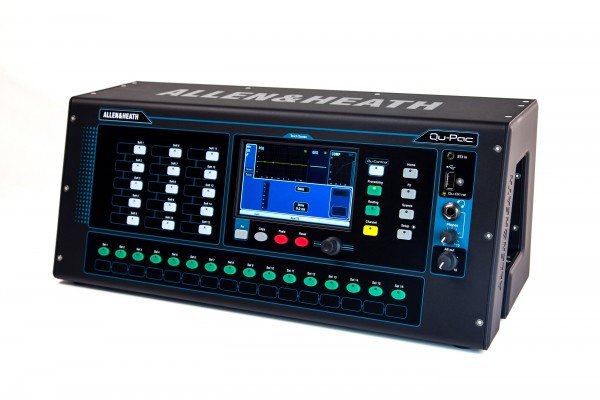
The Qu-Pac digital mixer from Allen & Heath is an ultra-compact solution, available freestanding or rack mounted, that targets schools, hotels, bars, theme parks and cruise ships.
The mixer has the advantage of being controllable via iPad app, but a built-in high-resolution 5in touchscreen provides a backup if the WiFi signal drops out. Connectivity and scalability comes through 16 mono inputs, three stereo inputs and 12 mix outputs on the rear panel, which can be expanded to 38 in/28 out by remote AudioRacks over Cat5.
The wide array of possible applications puts a greater emphasis on flexibility and ease of use and the installer can set up a custom ‘Qu-Control’ screen to give non-technical users a simple interface without unnecessary additional features.
The compact size makes the Qu-Pac suitable for use in confined spaces and where audio systems need to be discreet. Permission settings allow different levels of access for different users and provides security if the system is left unattended.
DiGiCo brings routing flexibility and future update potential
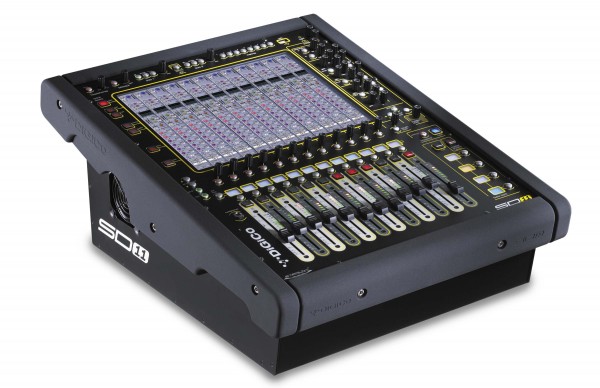
DiGiCo’s SD11 offers routing flexibility and has an optical fibre interface to communicate with a large number of I/O devices. The I/O racks use studio-quality preamps and the digital audio engine uses DiGiCo’s Stealth Technology to provide an internal 40-bit floating point sampling rate resolution that provides great audio quality and a large amount of headroom.
To process the audio, DiGiCo uses an FPGA chip, which provides power and flexibility allowing the system to be quickly reconfigured for different applications. It also means DiGiCo can release updates with new features and has the ability to increase the power of the consoles, ensuring it is futureproof.
Using the three different software applications that can be installed in the system, the SD11 covers a broad section of the installation market including broadcast and theatre applications. All members of the SD series can connect with all versions of DiGiCo Racks, providing the installer with great flexibility in type, size and connectivity of I/O.
CDC offers surface configurations and low latency processing
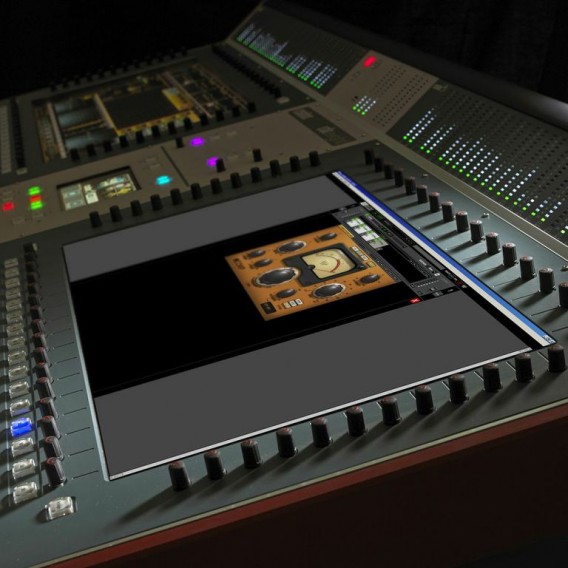
CDC eight is Cadac’s flagship digital live sound console designed specifically for concert touring and fixed installation. Cadac has taken a new approach to the user interface, which has resulted in a less menu-dependent console accessed via 24in HD anti-glare touchscreens. Additionally, there is a 6in LCD touchscreen for system control.
The CDC eight is available in two surface configurations; the dual-screen 32-fader console and a smaller single-screen 16-fader version. They are identical in capacity and capability but offer a choice of console footprint to fit the application.
Also included is a proprietary DSP mix platform and FPGA processing technology with low latency (sub 0.4 millisecond) and multiple surface options.
Yamaha combines Dante networking with auto-mixing capability
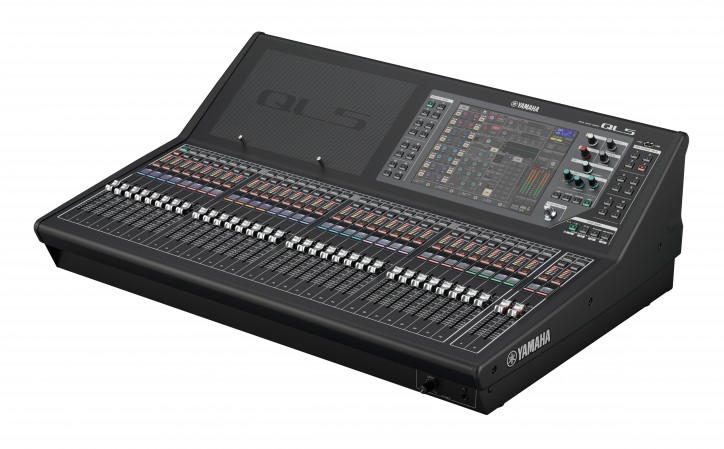
Yamaha’s QL5 digital mixing console from the QL series delivers the audio quality, processing power and flexibility of the CL series to applications where space and budget are prime considerations.
The QL5 features 32 inputs and 16 outputs in a 828.4mm wide chassis, and 64 mono and eight stereo input channels, making it ideal for small to medium-sized installations. However, on-board Dante networking allows it to be integrated into bigger systems with Yamaha’s R-series I/O units and CL series consoles. Up to eight R-series units can be controlled by a QL console, offering a possible 256 input sources.
The QL series comes with Dan Dugan’s auto-mixing capability, making it suitable for multiple-microphone applications.
The Port to Port facility gives CL series mixers access to the on-board connections of QL consoles, allowing them to be used as external I/O and for scalable audio solutions to be created. Auto Gain Compensation can be applied to the QL series head amps as well as R-series I/O units, allowing two or more QL and CL series consoles to share inputs without fear of unexpected level changes.
Stagetec’s personalised mixing console
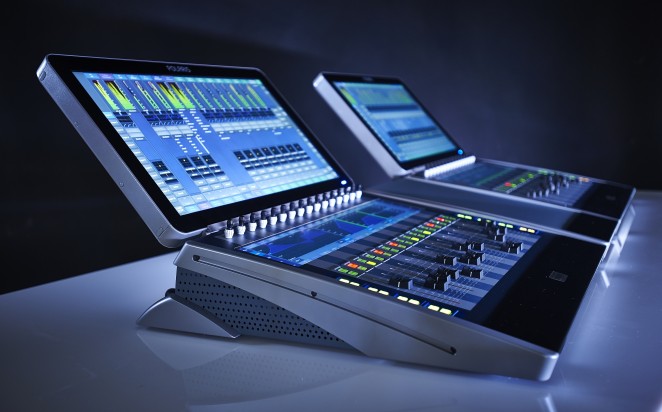
The Stagetec Polaris Evolution is a network-based console, which allows a split DSP power across multiple users, meaning multiple independent users can share one DSP. It is fully touchscreen integrated with a modern and flexible graphic user interface and claims to be the first fully personalised mixing platform.
The system can be expanded and used in different locations and in broadcast and theatre simultaneously. The controller distribution can be scaled for the production; for example, the three units and 16 faders can be used one day for three shows with 16 faders and the next day one show with 48 faders, allowing flexibility and scalability.
New features for this console are Audiomixing 3.0 and Integration of Object based 3D audio applications; it also has plug-and-play capability and the operating software facilitates a fast learning curve. The GUI can be set up with different access levels for different users, and the audio over IP supports Dante/AES67.
Soundcraft’s expanded functionality for two
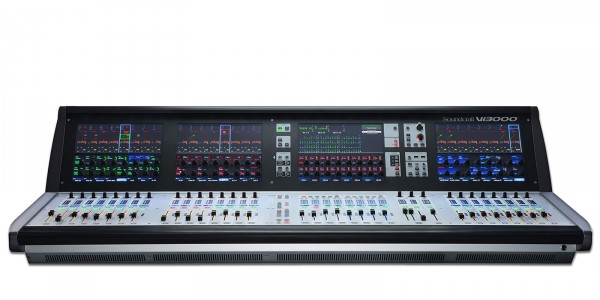
The Soundcraft Vi3000 features 36 faders, 24 mono/stereo busses and a black screen panel with four Vistonics II touchscreen interfaces, which means it can be used by two engineers at the same time.
Rear connectivity is extensive with a full complement of analogue and digital inputs and outputs as well as MIDI, USB, Ethernet, DVI out, and Dante/MADI record feed outputs. The console also has two expansion bays that can be fitted with MADI Stagebox cards to connect multiple Soundcraft Stagebox input expander modules.
Additionally, the Vi3000 can accommodate the Soundcraft Realtime Rack hardware/software unit that provides access to 74 industry-standard UAD plug-ins. It is also the first Soundcraft console to incorporate a Dante interface as standard.
